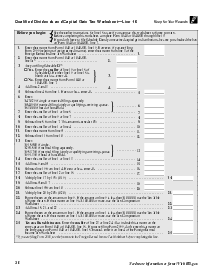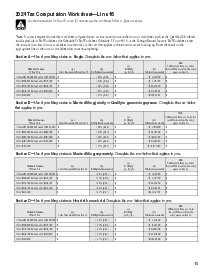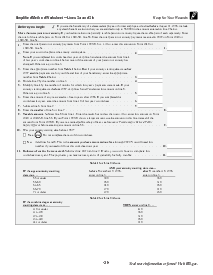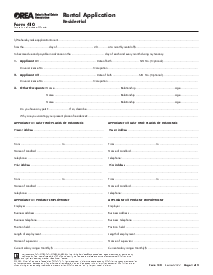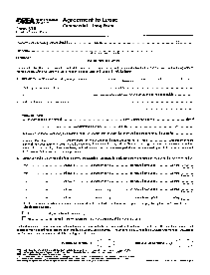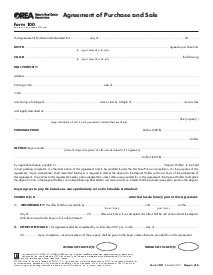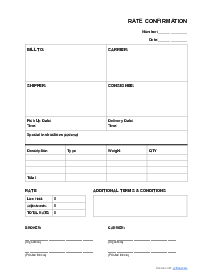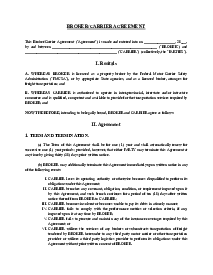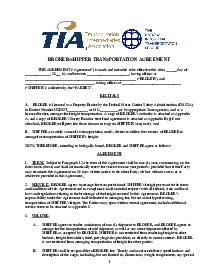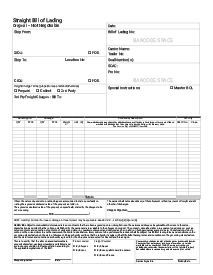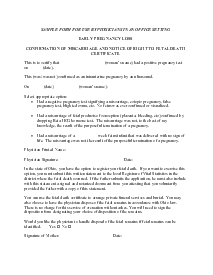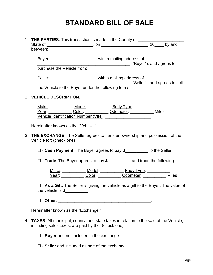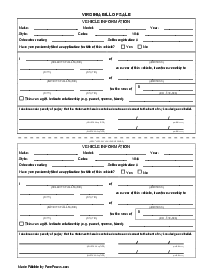-
Templates
1099 FormsAccurately report 1099 information returns and ensure IRS filing with easeExplore all templatesW-9 W-8 FormsEasily manage and share taxpayer details to streamline payments and meet IRS requirements with confidenceExplore all templatesOther Tax FormsFillable tax forms simplify and speed up your tax filing process and aid with recordkeeping.Explore all templatesReal EstateReal estate templates for all cases, from sale to rentals, save you a lot of time and effort.Explore all templatesLogisticsSimplify your trucking and logistics paperwork with our ready-to-use transportation and freight templates.Explore all templatesMedicalMedical forms help you keep patient documentation organized and secure.Explore all templatesBill of SaleBill of Sale templates streamline the transfer of ownership with clarity and protection.Explore all templatesContractsVarious contract templates ensure efficient and clear legal transactions.Explore all templatesEducationEducational forms and templates enhance the learning experience and student management.Explore all templates
-
Features
FeaturesAI-Enhanced Document Solutions for Contractor-Client Success and IRS ComplianceExplore all featuresAI Summarizer Check out the featureAI PDF summarizer makes your document workflow even faster. Ask AI to summarize PDF, assist you with tax forms, complete assignments, and more using just one tool.Sign PDF Check out the featurePDFLiner gives the opportunity to sign documents online, save them, send at once by email or print. Register now, upload your document and e-sign it onlineFill Out PDF Check out the featurePDFLiner provides different tools for filling in PDF forms. All you need is to register, upload the necessary document and start filling it out.Draw on a PDF Check out the featureDraw lines, circles, and other drawings on PDF using tools of PDFLiner online. Streamline your document editing process, speeding up your productivity
- Solutions
- Features
- Blog
- Support
- Pricing
Electronic Signature vs. Digital Signature: Do Both Terms Mean the Same Thing?

Liza Zdrazhevska
Electronic signing has become a much-used term among those seeking to reduce space-consuming paper documentation through digitalization. While some believe it to mean the same as the use of digital signatures, there is a difference. Read below to explore electronic signature vs digital signature in the context of documents.

The Difference Between Electronic and Digital Signatures
It’s not uncommon to see the words “electronic” and “digital” used interchangeably to precede “signature”. However, this approach ignores the hierarchy of the terms. If you want a short answer to the question, “How is an electronic signature different from a digital one?”, it could be as follows. Electronic signatures is a wider group. There are several types of electronic signatures, and digital signatures is one of them. To get a clearer idea of this distinction, let us explore each category in detail.
What’s an Electronic Signature?
Often shortened to “e-signature” (also “eSignature”), an electronic signature is an equivalent of a regular signature that a person might attach to a document in writing while signing it, that is, verifying a known authorization associated with this paper. It occurs in many forms and contexts. It’s safe to say that a vast majority of organizations, both online and brick-and-mortar, use electronic signing extensively these days, especially given the restrictions brought about by the COVID-19 pandemic.
The most common instance of an e-signature is typing your name on a document. Alternatively, it can take the form of signs, symbols, and even sounds — there are hardly any limits as long as they serve their purpose of rendering authorization. How do electronic signatures work? They pass data to certify that you have authorized certain proceedings under a document.
What Does a Digital Signature Look Like?
Digital signatures bring security in electronic signing to a new level. What is a digital signature? The term refers to a type of signature where the data that’s introduced for signing purposes is associated with a unique digital certificate. The latter is there to prove the ownership of the signature.
That is, the relation of digital certificate vs digital signature is that of a part and a whole, in which the certificate is the encryption tool that enables an electronic signature to meet the standards for a digital one.
While electronic signatures have technically been around for over a century, the encryption technology behind their digital variety was first introduced in the 1970s and brought to refinement in 1988. Digital signatures can be beneficial to anyone who attaches special importance to protecting their identity and preventing signature tampering.
To sum up, the key difference between “digital signature” and “electronic signature” is that the former refers to cybersecurity technology, while the latter generally means authorization of documents using electronic media.
Legal Aspects
There are situations where using a full-fledged digital signature might be “too much”, but is it legal to stick to less complex e-signature varieties? The brief answer would be yes, it is. Depending on your jurisdiction, different regulations can apply to different forms of electronic signing in general and digital signatures in particular, although there is a clear trend towards unification. There are laws in the United States, Canada, Australia, the UK, the European Union, and other parts of the world that pertain to the enforceability of electronic signatures.
However, some exceptions to this rule do exist. These are more common when it comes to serious domestic documents that aren’t likely to be exported, such as a limited number of US tax forms and the form used to apply for a driver’s license — in such cases, a computer-generated signature will not be accepted.
If you want to use any kind of electronic signature on your documents, it’s essential that the service you choose to use ensures legal compliance. PDFLiner enables you to sign your PDF file online in accordance with the US Electronic Signatures in Global and National Commerce Act, a major federal law that regulates electronic record keeping.
FAQ
The aim of this section is to briefly answer some of the most common questions regarding electronic and digital signatures and how the terms should be interpreted and used.
Which is more secure: an electronic signature or a digital signature?
A digital signature is a type of electronic signature characterized by enhanced security. It uses special technology that’s regulated by a system of rigid standards to prevent tampering and collect evidence of any attempts at it.
Is a PDF signature an electronic signature?
It is. Any authorization pertaining to a document that is created using electronic means can be referred to as an electronic signature.
How do I sign with an electronic signature?
The most common approaches are to use a trusted service that will convert the text that you type into an electronic signature or let you draw one, or to insert a quality photograph of your handwritten signature.















